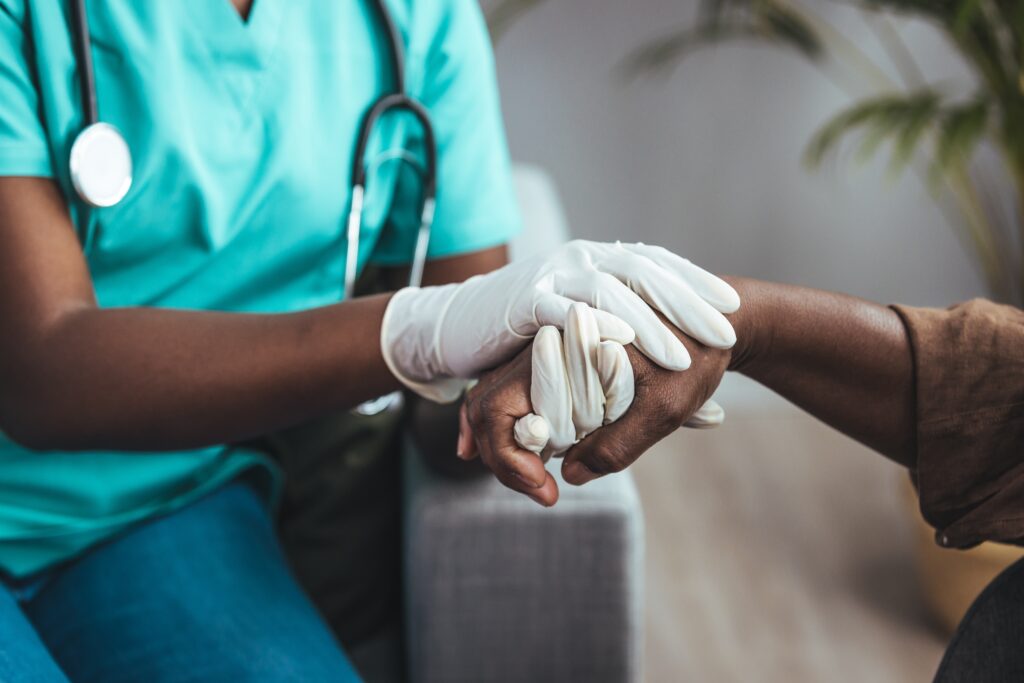Most motorcycle cases seek to prove another motorist on the road caused your accident due to recklessness or negligence. Proving negligence requires you to show that another motorist breached a duty of care owed to you. All motorists owe a duty to others to use ordinary care to operate their vehicles in a reasonable manner.
In a claim of negligence you must prove these three basic things:
- The other driver wasn't following traffic laws or driving safely (like running a red light or texting while driving)
- Their unsafe driving is what caused your accident (it wouldn't have happened if they were driving properly)
- You got hurt and had expenses because of the accident (like medical bills or lost work time)
Proving recklessness requires you to show that the other driver consciously (knowingly and intentionally) disregarded a substantial risk that his or her actions would cause bodily injury.
Potential Losses

A motorcycle accident can leave you with significant injuries and damages. When another party bears all the fault for your crash, you can pursue full compensation in a legal claim.
Losses for which you might receive financial recovery after your motorcycle accident include:
- Costs of medical treatment, including hospital and surgical bills, physical and occupational therapy, pain medication, mobility equipment, or other out-of-pocket expenses (like transportation to appointments and procedures).
- Personal care expenses, if your injuries keep you from performing personal or household care tasks.
- Lost wages or income for the time you miss from work while recovering after your accident.
- Lost earning capacity, if your injuries prevent you from returning to your old job.
- Pain and suffering
- Lost quality of life, such as from physical disabilities or disfigurement due to injuries.
If You Are Partly at Fault
Even if you are partially to blame for your motorcycle accident, you may still be entitled to compensation for your injuries and damages. Most states use what is called the “comparative negligence” or “comparative fault” rule in accident cases. Generally speaking, the rule states that an injured accident victim is not barred from bringing a claim for compensation because the victim shares part of the fault for the accident and injuries.
Comparative Fault Rule
The details of the comparative fault rule vary from state to state. For example:
- In Colorado and Kansas, an injured plaintiff may pursue a claim for compensation if his or her share of fault is less than the combined fault of all other responsible parties. If the plaintiff is more than 50% at fault, his or her claim is barred.
- In Oklahoma, an injured party may pursue a case if his or her share of fault is less than or equal to the combined fault of all other parties. In other words, if the person is less than 51 percent at fault, he or she can pursue a claim.
- In Missouri, an injured plaintiff may pursue a claim for compensation regardless of his or her share of fault.
Under each of the versions of the comparative negligence rule, an injured plaintiff’s total compensation will be reduced to reflect the share of fault.
For example, if you suffered $100,000 in damages from your motorcycle accident but you are determined to bear 20 percent of the fault, your compensation will be reduced by $20,000.
However, we recommend that you consult with a motorcycle accident lawyer if you are interested in pursuing an injury claim after a motorcycle crash.
Protect Your Rights
If you get into a motorcycle crash, remember the following points. They can help protect your legal right to claim compensation for your losses.

- Call 911 or the police. Get emergency medical assistance if needed. An officer will prepare an accident report. Request a copy of this report.
- Get contact information. Gather the names, contact details, vehicle or license info, and insurance info from every driver involved in your accident. Get the names and contact info of any eyewitnesses to the accident. Your attorney may need to reach them for a statement later.
- Photograph and/or video the accident scene. Record damage to the vehicles. Note traffic controls, as well as the weather, lighting, and road conditions. If you suffered visible injuries, photograph them as well. If you are unable to take photos, you can also ask someone at the scene to do this for you.
- If you don’t get emergency medical attention at the accident scene, see a doctor as soon as possible. Follow your doctor’s treatment plan. Save all paperwork related to your treatment.
Schedule a free consultation with a motorcycle accident lawyer at Mann Wyatt Tanksley Injury Attorneys now. We can walk you through your legal rights to get you moving in the right direction.
Disclaimer: Even with diligent and zealous representation, not all cases can be won. Every case is different and results are based on specific factual and legal circumstances, and similar results may not be obtained in your case. Our past performance is no guarantee of future results.